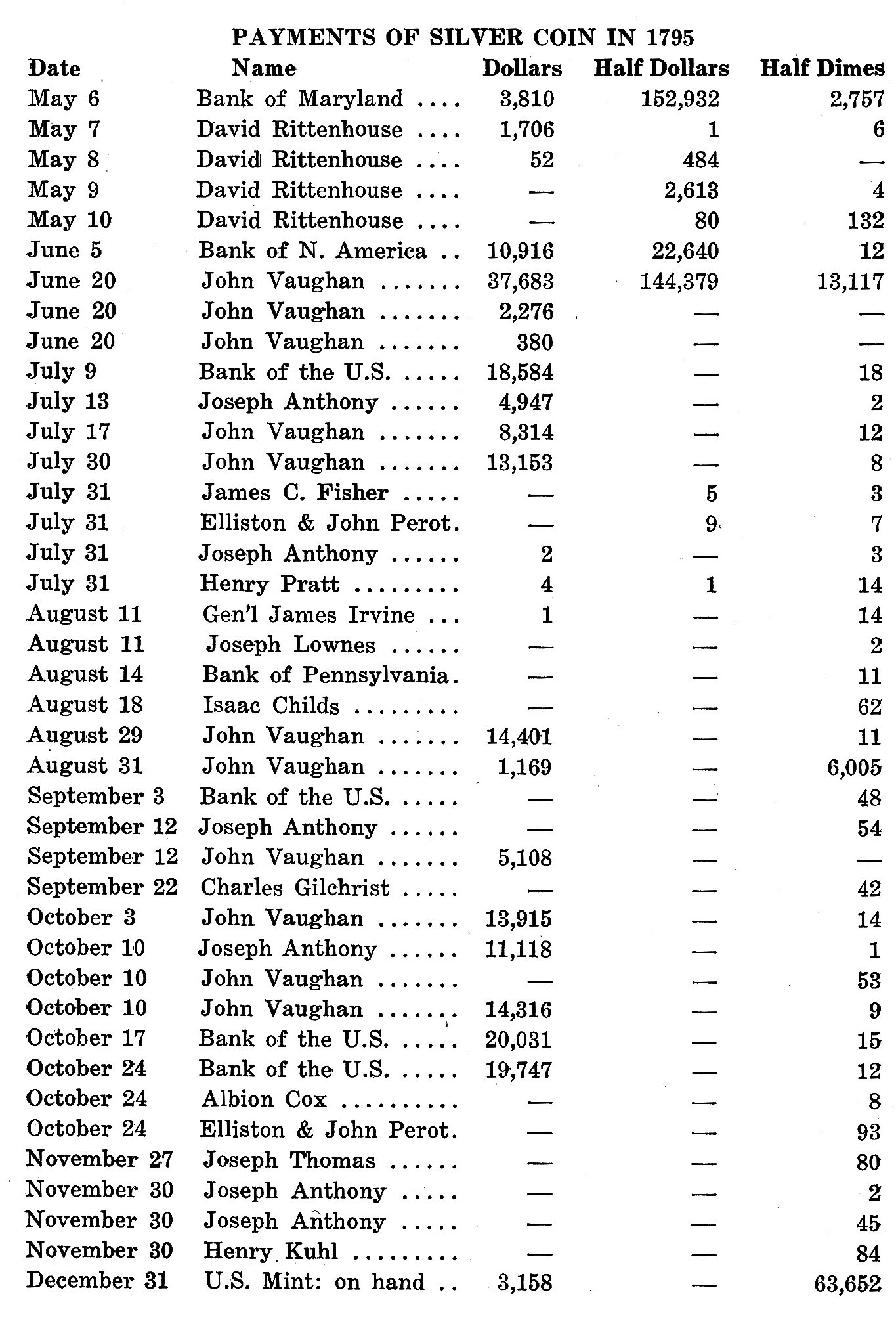How were the 160,000, 1795 Silver Dollars distributed to the public?
 Coinstartled
Posts: 10,135 ✭✭✭✭✭
Coinstartled
Posts: 10,135 ✭✭✭✭✭
Half Dimes were just hitting the market so it was unlikely that you could just plop down 20 of them to buy a new shiny dollar.
Seriously though, what type of tender was likely used to acquire the then substantial mintage of dollars?
0
Comments
In those days private citizens and business could bring gold and silver to the mint, and the mint would convert those metals into coins. It was free of charge if you could wait for the mint to do the job on their schedule. If you had to have the coins as soon as possible there was a 5% charge. After that the business, which be banks or most anything, put them into circulation as they practiced their trade.
I have a theory about early half dimes. The mint produced a large number of them 1795, dated 1794 and '95. I think that those pieces were used to make up the odd amounts for paying those who deposited silver for coinage.
I have a nice 1802 Bust Dollar. I've often thought how great it would be if I could jump on a time machine and trade it back than for an 1802 half dime. Then I'd be able to complete my set!
The 1802 half dime is a rare date with only about 35 to 40 known in all grades, including "barely there,"
Bartleby the coin merchant might send you back (forward) with an extra hundred coins to get cac'd.
The following page, from the Numismatic Scrapbook Magazine of December 1963,

ought to answer the question. It should be noted, however, that the May 7 & 8
payments of dollars to David Rittenhouse are those dated 1794 and had actually been
paid out the preceding October. The May dates in this case were fictional in order
to comply with legal requirements.
Great info, Denga.
John Vaughan was treasurer of the American Philosophical Society from 1791 to his death in 1841.
The Philadelphia Board of Brokers was the United States first stock exchange founded in 1790, the early stock trading was mostly banks. The first price quotes for stocks was published by Samuel Anderson on Chesnut Street in 1792. Some of the Mint officers were investors of bank stock.
Interesting, thank you !!!
@denga...Interesting chart... What is the source of that information? Not doubting it, just interested. Cheers, RickO
No doubt a few were paid out that way, but the number of deliveries was relatively small, and even if each deposit had an odd net value after refining greater than 94 cents and less than an even dollar, that required 19 half dimes, that would still only require a few hundred coins per year.
The figures were taken from the so-called Waste Book, which was the rough entry ledger
kept by the mint treasurer. When the accounts were settled each quarter the final entries
were then posted to the Bullion Journal. Those interested in seeing the rest of the Waste
Book entries can find them on the Newman Portal, under the United States Mint RG (Record
Group) 104 Entry 38. The page illustrated here covers July 13 to July 21, 1795, and shows
coins received from the chief coiner and coins paid out to depositors.
Excellent example of how deposits were paid off!
How about the distribution of CARSON CITY coins?
I think those were distributed mixed among large and sharp rocks in bags.
@denga ....Thank you very much.... Cheers, RickO
All very interesting. Off the subject matter for just one second... the hand writing skills of those days totally amazes me.
And notice the "half dismes" spelling.
Looks like an "f".
Half Difme?
The long, medial, or descending s (ſ) is an archaic form of the lower case letter s. It replaced a single s, or the first in a double s, at the beginning or in the middle of a word (e.g. "ſinfulneſs" for "sinfulness" and "ſucceſsful" for "successful"). The modern letterform is known as the short, terminal, or round s.
What might be confusing some in the July 1795 example Denga posted, is that internal Mint transfers were made by the officer's name and/or title. Final delivery to the depositor was via the Mint Treasurer. Most depositors were bullion/specie dealers, commercial banks and the Bank of the United States. This basic accounting format was maintained for decades.
Great thread with interesting historical info.
Poor Joseph Lownes didn't even have two nickels to rub together.
... Yet he still had a couple nice BU 1795 half dimes. ..
...Even if they were just moderns.
ttt